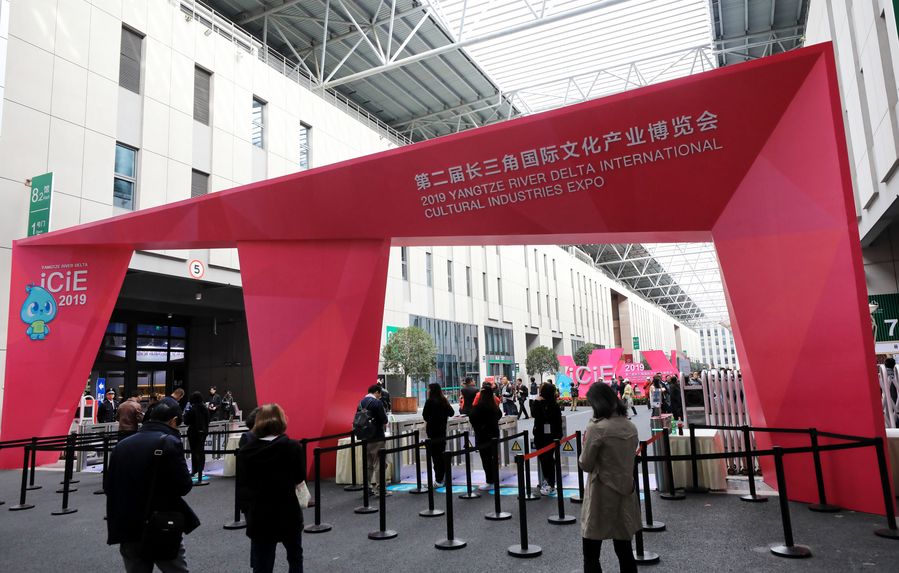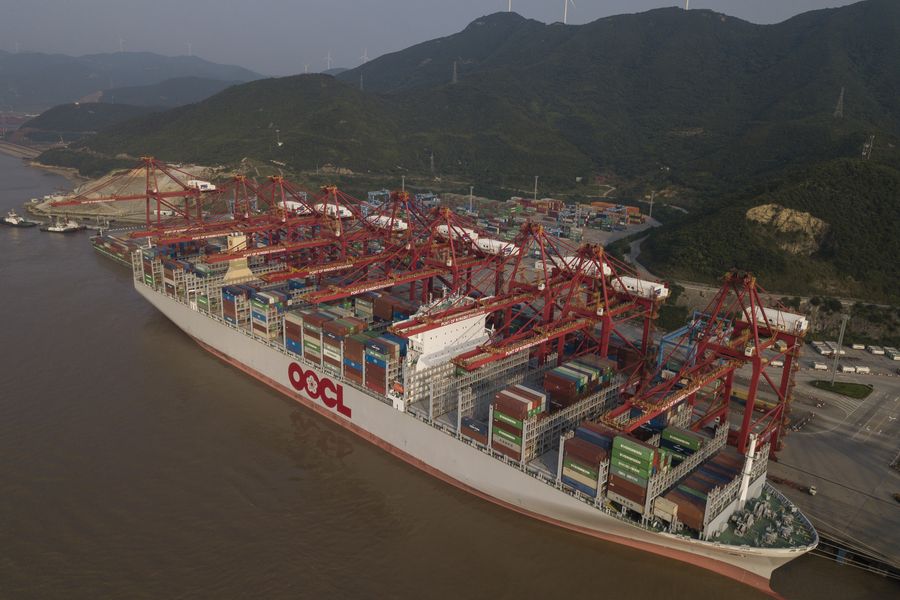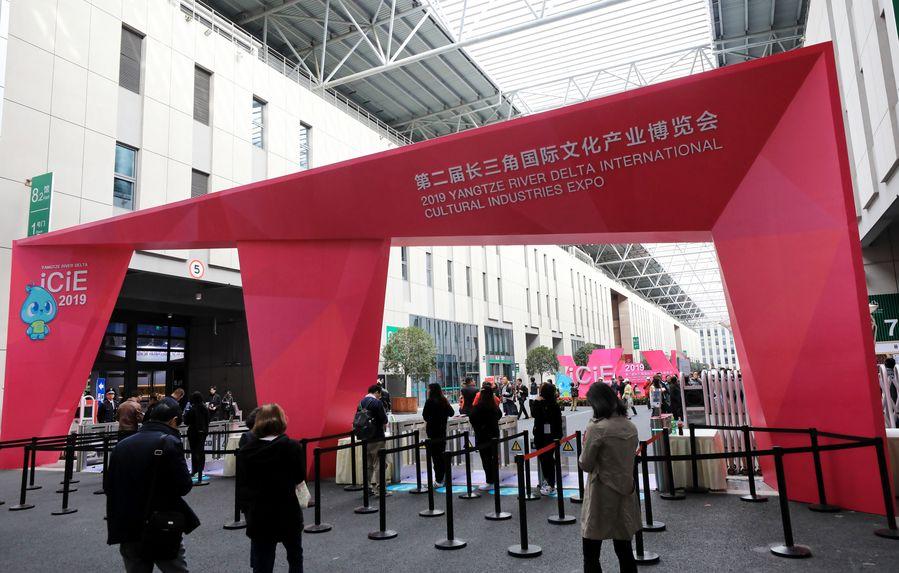-- Outline of the integrated regional development of the Yangtze River Delta
The Communist Party of China Central Committee and the State Council on Dec. 1 of 2019 jointly issued an outline of the integrated regional development of the Yangtze River Delta.
The document outlines targets, requirements and measures to boost the integrated development of the Yangtze River Delta and build a regional cluster of high-quality development.
 Photo
taken on Nov. 21, 2019 shows the Yangtze River Delta International
Cultural Industries Expo held in Shanghai, east China. (Xinhua/Fang Zhe)
Photo
taken on Nov. 21, 2019 shows the Yangtze River Delta International
Cultural Industries Expo held in Shanghai, east China. (Xinhua/Fang Zhe)
As one of China's most economically active, open and innovative
regions, the Yangtze River Delta boasts strategic significance in the
country's modernization and further opening-up, which makes its regional
integration crucial for leading the country's high-quality development
and building a modern economic system.
The outline, mapping development for a 358,000-square km expanse that encompasses Jiangsu province, Zhejiang province, Anhui province and Shanghai municipality, consists of 12 chapters.
Tasks specified in the outline include establishing a coordinated innovative industry system, enhancing connectivity of infrastructure, strengthening environmental protection, advancing public services and building the Shanghai free trade zone under high standards.
--- Development goals
The document detailed development goals to be achieved by 2025 and offered visions into 2035.
By 2025, the Yangtze River Delta is to see substantial development and basically realize integration in the science and innovation industry, infrastructure, environment and public services, said the document.
To fulfill integrated development in the science and innovation sector by 2025, the ratio of the region's R&D spending to its gross domestic product (GDP) should top 3 percent, while its output of high-tech industries should account for 18 percent of total industrial output.
In the same period, connectivity of infrastructure will be represented by improvements in railway and expressway density and a 5G network coverage of 80 percent.
The outline also laid out environment standards to be met by 2025 in terms of PM2.5 density and energy consumption per unit of GDP.
By 2025, accomplishments in public services should put per capita fiscal expenditure at 21,000 yuan (about $2,987) and extend the average life expectancy to 79 years, according to the outline.
The outline also called for a unified market system marked by openness and the free flow of resources.
Looking further into the future, the outline envisioned the Yangtze River Delta as the most influential and robust driving force of the nation's development by 2035.

Aerial photo taken on Oct. 15, 2019 shows a view of the Lujiazui area in Shanghai, east China. (Xinhua/Fang Zhe)
--- Background
Yangtze River Delta, the 358,000-square km expanse, about the same size as Germany, is one of China's most economically invigorating and innovative regions. It encompasses the provinces of Jiangsu, Zhejiang, Anhui, and Shanghai Municipality. It contributes about one-fourth of the country's GDP and one-third of foreign trade and investment.
Located at the Yangtze estuary with criss-crossing rivers, the region, led by Shanghai, has witnessed its residents enjoy geographical proximity and cultural affinity, as well as long-term exchanges with the outside world for a long time.
The Ningbo Zhoushan Port has become the largest port in the world in terms of cargo tonnage, linking the Yangtze River Economic Belt with the 21st Century Maritime Silk Road. It handled more than 26.35 million standard containers in 2019.

Aerial photo taken on June 13, 2018 shows a cargo vessel at Chuanshan port zone of Ningbo Zhoushan Port, east China's Zhejiang Province. (Xinhua/Huang Zongzhi)
Less
than 200 km southwest of Ningbo is the country's small commodity hub of
Yiwu, home to 15,000 foreign merchants from over 100 countries. Dubbed
as the "World's Supermarket," it receives more than 550,000 overseas
buyers and sells commodities to more than 210 countries and regions
every year.




 A single purchase
A single purchase









